Are you looking for the perfect chicken breeds for brown eggs?
When starting out, it can be intimidating to figure out what you need to learn (let alone understand and absorb it all).
Fortunately, there are plenty of breeds to choose from.
From hardy and reliable Rhode Island Reds to exotic Barnevelders and Welsummers, this blog post offers an overview of the best chicken breeds for producing those delicious and nutritious large brown eggs.
Keep reading to find out which ones fare the best in terms of egg-laying rate, hardiness in changing weather conditions, lifespan, size—and much more!
Best Chicken Breeds for Brown Eggs
1. Barnevelder
Quick Breed Profile
TheBarnevelder chickenis a popular and eye-catching bird known for its striking feather colors, beautiful appearance, egg-laying ability, and overall good nature.
This breed is mainly found in The Netherlands. It originates from the 19th century (or earlier, when we have our first records of the breed).
Barnevelder feathers are double-laced, so they look like darker, blacker Golden-Laced Wyandottes.
It’s common to see them as “Black” laced (what resembles the golden-laced wyandotte). Still, they also come in double silver laced, double laced blue, white, silver blue, and chamois.
曾经有一只鹧鸪,但它有问uietly gone extinct.
Their legs and feet are yellow-brown and occasionally adorned with specks of black or green.
Barnies have great personalities; they settle easily into domesticated environments and make excellent pets and producers (both meat and eggs) for poultry keepers.
Barnevelder Large Brown Egg Production
Barnevelders lay large chocolate brown eggs, producing the deepest, darkest, richest shade of brown eggs on this list.
Most Barnevelder hens will give you three to four eggs a week, totaling around 156 to 208 eggs per year– with most of the eggs coming in the winter.
Keeping Barnies with your summer-laying hens could be beneficial to ensure you have a steady supply of large brown eggs all year.
2. Barred Plymouth Rock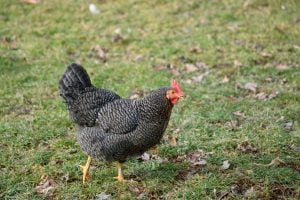
Quick Breed Profile
TheBarred Plymouth Rockis a breed of chicken known for its distinctive black and white barred feathers.
The Barred Plymouth Rock is an adaptable bird, making them well suited for confinement or grazing on free range.
In my personal experience, these birds are ridiculously “easy keepers,” meaning it’s easy for them to become overweight.
Pay attention to this, so you don’t accidentally make your birds unhealthy, as I have before!
A curious bird, the Barred Rock enjoys human company; many don’t mind being picked up and carried around by children or adults.
Their docile nature allows them to get along easily with other hens in the flock.
All in all, the Barred Plymouth Rock chicken is an ideal addition to any backyard or homestead.
Barred Plymouth Rock Large Brown Egg Production
Barred Plymouth Rock hens lay an average of 250 to 280 large brown eggs annually, making them excellent for backyard egg production.
First-time layers may only produce medium-large eggs, but the egg size will increase as she matures.
Many companies and homesteaders called Barred Rocks “occasionally” broody.
With that said, nearly all of my broody hens from my mixed flock were Barred Rock hens (despite that breed typically making up less than 5% of my flock).
If you have Barred Rocks, I’d love for you to weigh in on this in the comments, please!
3. Black Australorp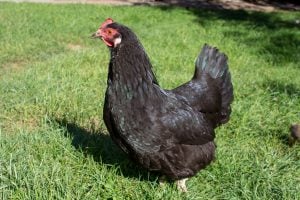
Quick Breed Profile
TheBlack Australorpis a beautiful, regal-looking breed of chicken initially developed in Australia.
They are well suited to warm and cool climates as they are well-feathered and relatively large, which helps them to withstand some of the harshest conditions.
Free range can reach up to 8 pounds, making them good meat birds.
The Black Australorp’s black feathers have a sheen making the bird look particularly impressive in the sunlight.
It’s also rumored that keeping black hens in your flock will ward off somebirds of preybecause they resemble ravens and crows (who are natural enemies of hawks, owls, eagles, and falcons).
These chickens are known for their docile temperament, making them easy to handle and great companions if you’re looking for pets.
Lastly, they exhibit excellent motherly instincts, making them excellent brooders, sitting on eggs, and being attentive to their new chicks.
Black Australorp Large Brown Egg Production
Black Australorp is seriously underrated when it comes to egg production.
The current record for the most eggs laid by one of these hens is 364 eggs in a 365-day (one-year) span.
What’s most remarkable about this hen is that she was NOT given any supplemental light during this year.
Most hens lay 250-309 brown eggs yearly, though you may find a few superstars in your flock who will produce more.
These eggs are light brown and medium-large in size.
Most hens will live to be six to ten years old but will stop or significantly slow their egg production in their third or fourth year.
4. Buff Orpington
Quick Breed Profile
TheBuff Orpingtonis a popular and dependable chicken breed.
It has ornamental value as well as numerous practical applications.
黄色(浅黄色)是优秀的experienc品种ed and beginner chicken keepers.
This large, plump bird is intelligent and known to be docile, friendly, and hardy in colder climates.
Fellow northerners will love how tough they are in our brutal winters.
Summers can be brutal on them, though, so offer them plenty of shade and fresh cool water.
The Buff Orpington was first bred in the 1800s. They’re a cross between the Plymouth Rock (mentioned above) and the Langshan, with additional Barb influence, making it an old but reliable chicken variety for connoisseurs of different breeds.
As an egg layer, Buff Orpingtons are incredibly productive.
Buff Orpington Large Brown Egg Production
You can typically expect 200 to 280 large brown eggs per hen per year.
If you want a broody mama for your flock, go with Buff Orpington.
She is pretty broody and a responsible, attentive mother. Her fluffy skirt can hide comically large numbers of chicks, and she’s good at keeping her little chicks warm even in the dead of winter.
Feel free to slip eggs from other hens under her when sitting on a clutch because she seems happy to accept any chicks she can get.
5. New Hampshire Red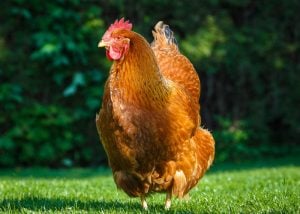
Quick Breed Profile
TheNew Hampshire Redis a well-known breed of chicken appreciated for its hardiness and large egg production.
It was developed in the early 1900s in New Hampshire to improve the productive qualities of existing red chickens.
This breed has excellent winter hardiness, meaning hens lay eggs reliably during cold winters.
Be warned that these tough girls are not always kind to their flockmates and aren’t afraid to fight to establish and hold their high pecking order in the coop.
Other than that, New Hampshire chickens are easy to care for, maintaining healthy weights and gorgeous feathers.
Their plumage consists of beautiful shades of chestnut, light red, and rust red, and their under-feathers typically have pale yellow to salmon-colored highlights.
New Hampshire Reds are primarily red, but they were actually named after the person who developed them– Professor “Red” Richardson.
They typically weigh around six pounds and reach maturity at about eighteen weeks.
Farmers have used them for decades for meat, eggs, and companionship.
New Hampshire Red Large Brown Egg Production
Most New Hampshire Red Hens lay 200 large tinted to light brown eggs yearly.
They are also more likely to go broody and take great care of their chicks if allowed to hatch them.
Pasture-raised, heritage egg producers often choose Rhode Island Reds and New Hampshire Reds because of their egg-laying and foraging skills.
6. Rhode Island Red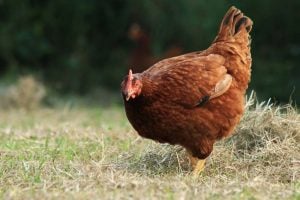
Quick Breed Profile
TheRhode Island Red是鸡的品种来自Rh的状态吗ode Island in the US.
These pretty birds are renowned for their hardy temperaments and have been kept as farmyard favorites since 1904.
The Rhode Island Red is a dual-purpose breed, making excellent laying hens while producing sufficient meat for consumption.
They have large reddish-brown bodies and weigh six and a half pounds as hens. Roosters are closer to eight and a half pounds, occasionally more.
These chickens can be extremely friendly and are quick to learn.
They memorize feed schedules quickly and seem willing to bond with their favorite people.
These birds can live up to eight to ten years if properly taken care of.
This makes them an excellent choice for people who want to form long-lasting companionship with some of their hens.
Rhode Island Red Large Brown Egg Production
Many Rhode Island Red hens will produce 200 to 300 medium to large light brown eggs a year.
The first eggs that RIR hens lay will be closer to medium-sized; as they mature, their eggs will incrementally get larger.
商业RIR母鸡产蛋略高于他ritage hens, but heritage hens boast slightly better quality meat.
Heritage hens are also more likely to go broody than commercial hens. However, this can still be a hit or miss depending on the hatchery you sourced yours from.
7. Rhode Island White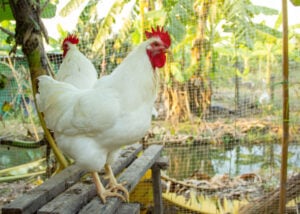
Quick Breed Profile
If you’re like me, the first time you ever saw a Rhode Island White, you may have incorrectly assumed she was a Leghorn.
The Rhode Island White may not be the most popular chicken breed. Still, it is an invaluable asset to homesteads and small farms.
Originating in 1904 on a Rhode Island farm, Rhode Island White chickens are an excellent dual-purpose bird. They grow quickly, produce flavorful meat and eggs, and have beautiful creamy-white feathers.
The birds reach butchering weight faster than most breeds due to their larger size and voracious appetite.
In addition, this breed is known for being hardy and tough under even difficult conditions, making them perfect for free-ranging.
They have even survived cold winter conditions with little intervention from their owners.
If you’re looking for a dependable breed of chicken for homesteading or small-scale farming purposes, the Rhode Island White should be near the top of your list.
Rhode Island White Large Brown Egg Production
Rhode Island White hens often lay 200 to 250 large to jumbo-sized eggs that are brown to dark brown.
It’s not common for them to act broody, though some individuals may break this rule.
They do a fantastic job of laying eggs throughout the coldest parts of the year, too, so you can easily keep a steady stream of protein for yourself (and your neighbors).
8. Welsummer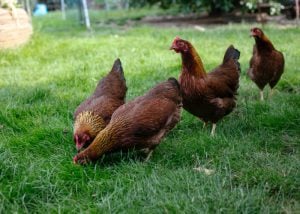
Quick Breed Profile
TheWelsummer chickenis a breed hailing from the Netherlands.
It’s often identified by its distinctive markings that evoke the look of an orange-spangled sun and are a beautiful copper-red color throughout.
The neck is usually golden brown and may have a touch of lacing.
The body is darker brown with light brown to white feather shaft.
The ladies usually weigh six pounds, but roosters are closer to seven pounds.
Regarding their temperaments, these chickens are bold, outgoing, curious, and fairly active compared to many other breeds, providing plenty of activity from dawn to dusk.
People who enjoy watching their flock from their porch or kitchen window will have endless entertainment with this breed.
For this reason, they need lots of space; they derive significant benefits from having access to open spaces to forage, play, and explore.
They’re excellent foragers who can source a good portion of their diet and produce large quantities of eggs.
Welsummer Large Brown Egg Production
Most Welsummer hens lay 160 to 250 large, rich terra cotta brown eggs yearly.
Many of these eggs have dark speckles in the bloom, which you can leave on or wipe off with a damp dishcloth.
Welsummers are notoriously bad mothers.
They seldom go broody, but those who hatch eggs don’t take good care of their chicks – she may intentionally “lose” them.
Of course, some exceptions apply for individuals, but as a whole, it’s probably best to incubate your fertilized eggs instead.
9. White Plymouth Rock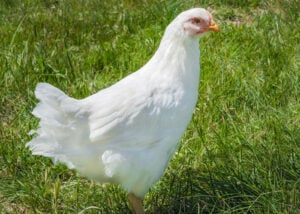
Quick Breed Profile
TheWhite Plymouth Rockhen, usually just called a “White Rock,” is a tremendous all-around chicken.
She is a dual-purpose breed that is reliable as a steady source of eggs and meat.
This is a popular breed for backyard chicken keeping and has beautiful white coloring.
If you’re going for a diversely colored flock, she’s a lovely addition.
The breed originated in the mid-1950s in the Northeastern United States, and its personalities are known to be calm and docile.
The White Plymouth Rock is highly adaptable to varying climates, making it well-suited to many regions.
It’s medium to large in size, with hens generally weighing up to eight pounds or so.
Because of this, they are worth the effort to process if you want a good source of delicious meat.
White Plymouth Rock egg production is fairly impressive too.
White Plymouth Rock Large Brown Egg Production
Most White Plymouth Rocks lay 200 to 300 large brown eggs annually, though a select few may lay more than 300 a year if kept in optimal conditions.
She acts as a good and protective mother. Still, you’re not likely to witness this as she rarely goes broody.
10. Golden Comet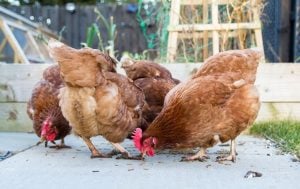
Quick Breed Profile
Golden Comets, sometimes called Red Stars or Red Sex Links, is a hybrid hen that produces staggering amounts of eggs in their first two years of life.
This hybrid is an excellent choice for new poultry farmers as they are hardy, friendly, and adaptable. They forage well but can be kept up if needed.
These birds typically grow fast if well nourished, reaching four to five pounds at sixteen to eighteen weeks.
They even grow larger if allowed to continue growing until their full size of 5 to 6 pounds at twenty weeks old.
Golden Comets are bred from a hybrid of two specific chickens: Rhode Island Red hens and White Plymouth Rock roosters. This gives them robust egg-laying and meat-producing genetics.
The Golden Comet chicken is definitely worth exploring as a chicken keeper.
Golden Comet Large Brown Egg Production
Golden Comets reliably lay about 330 (or more) medium-large light brown eggs during their first two years.
In the third year, this production significantly drops off.
This hen only naturally lives past her third or fourth birthday because heavy egg-laying takes a lot of energy and resources from her body.
It’s rare for a Golden Comet to be broody or take an interest in chicks; she’s just too busy laying her plethora of eggs.
11. ISA Brown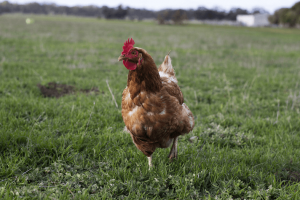
Quick Breed Profile
TheISA Brownis a hybrid, not a true “breed.” She is well-suited for meat and egg production, though most people keep them for eggs.
The ISA Brown was created to satisfy the need for large quantities of safe, healthy food in the marketplace. This resulted in uniform characteristics such as high fertility and excellent feed conversion efficiency.
They’re easy to tame and good foragers, able to find their own food when properly tended.
The ISA Brown makes a good choice for owners interested in raising chickens for their food output and sweet companionship.
ISA Brown Large Brown Egg Production
Most ISA Brown hens lay 300 large brown eggs a year.
Most hens lay for two years before their health dramatically declines– a common ailment amongst hybrids bred for high production.
Since they live such short lives, finding a broody ISA Brown is scarce.
They are typically kind to neighboring mother hens and chicks in the coop and aren’t likely to bully newly hatched chicks.
12. Bovans Brown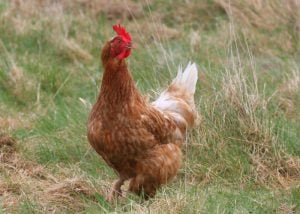
Quick Breed Profile
Bovans Brownchickens are a hardy breed that was recently developed in the 21st century.
Noted for their excellent egg-laying capabilities, they are popular in commercial spaces and backyards.
Bovans Brown chickens have reddish-brown feathers with dark facial striping.
They are prone to matting when they go too long without molting (this issue usually sorts itself out naturally when they molt).
They are great all-rounder birds that can be used for eggs and meat and for keeping other breeds of chickens safe from potential predators. This is because they are territorial in their space and will fight with predators.
Bovans Brown has a truly impressive output and a strong ability to adapt quickly to any environment.
Bovans Brown Large Brown Egg Production
Many Bovan Brown hens will lay around 330 large brown eggs in their first year of laying.
In their second and third years of life, this will drop to a still-impressive 250 to 300 eggs annually.
It should be noted that this hybrid tends to lay more eggs when kept in a colony rather than free-range– but free-ranging still produces more eggs than cage-kept hens.
13. Wyandottes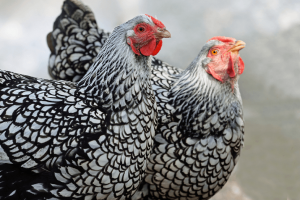
Quick Breed Profile
Wyandottesare a popular dual-purpose breed of chicken, originally developed in New York and named after an indigenous tribe called the Wyandot Native Americans.
There are several varieties, fromSilver LacedtoGold Lacedto the up-and-comingBlue Laced RedsandBlue Laced Golds.
Their feathers display multiple colors, making them attractive birds on farms and smallholdings.
Personally, I don’t consider my flock complete unless I have at least two varieties of Wyandottes in it.
他们迅速增长,达到成熟度在18岁d 20 weeks old, with the male birds growing to 7 to 8 pounds while the females can reach up to 6 to 7 pounds.
In addition to being great layers and fast-growing birds, Wyandottes are also excellent foragers.
They’re generally quite tolerant of weather conditions– plus, they tend to get along with most other breeds in larger flocks.
They don’t tolerate bullies, though, and are quick to put mean hens in their place. For the most part, they rank relatively high in the pecking order.
They are good to tolerate toddlers and small children, too, with some hens even becoming close friends with their favorite little humans.
With all these qualities combined, it is no surprise that Wyandottes make for desirable pets and great egg producers.
Wyandotte Large Brown Egg Production
Most Wyandotte hens will give you 200 to 220 large brown eggs annually.
Though this isn’t a lot of eggs, especially when compared to some of the other breeds on this list, they make up for it by being extra-broody and excellent mothers.
They forage well and teach their chicks– and any other young pullets in their flock– how to successfully free-range.
14. Brahmas
Quick Breed Profile
Brahma chickensare an impressive heritage breed that originated in India and were brought to America in 1852.
These large birds have a characteristic shaggy look, with muffs and beards surrounding their faces.
They have big feathered feet that add to their overall impressive size.
They are hardy birds that can withstand cold weather and winter better than most other breeds.
Brahmas come inlight, dark, andbuffvarieties, all with healthy, thick plumage.
As you can imagine, they were initially bred for their meat but have recently transitioned to be a dual-purpose or egg-specific breed.
不过,他们只母鸡,大约8磅ten pounds as fully-matured roosters.
Known for their docile temperaments, Brahmas make terrific family or pet chickens that love being around people and children alike.
If you want a cute duo, get a big Brahma chicken as a pet for your toddler, they’ll be about the same size.
Brahma Large Brown Egg Production
Most Brahma hens will grace you with over 200 large brown eggs a year.
You should note that it may take up to seven months for the hens to start laying eggs, though, so you’ll need patience.
On the bright side, they are fantastic mothers who occasionally get broody and will lay eggs when most of your other hens don’t– right in the coldest parts of winter.
FAQs on Best Chicken Breeds for Brown Eggs
How To Tell an Egg’s Size?
Experienced chicken keepers may be able to tell an egg’s general size just by looking at it, but most people need a postage or food scale to be sure.
You can also add a whimsicalincredible egg scaleto your kitchen counter to be extra sure of the size.
How Many Egg Sizes Are There?
There are six official egg sizes: peewee (15 ounces), small (18 ounces), medium (21 ounces), large (24 ounces), extra large (27 ounces), and jumbo (30 ounces).
What Size Egg Should I Use In a Recipe?
Nearly all recipes use large eggs, the standard size for cooking and baking.
How Do I Convert Egg Sizes for Recipes?
Large is the standard size used for recipes.
You need three small or two medium eggs to get the equivalent of two large eggs.
For the equivalent of three large eggs, use four small, three medium, three extra large, or two jumbo eggs.
To equal four large eggs, substitute five small, five medium, four extra large, or three jumbo eggs.
And lastly, to get the equivalent of five large eggs, use seven small, six medium, five extra-larges, or five jumbo eggs.
What’s The Nutrition Info For a Large Brown Egg?
A large brown egg is about 70 calories with 6 grams of protein, 5 grams of fat (1.5 grams of saturated fat), 185 milligrams of cholesterol, and 70 milligrams of sodium.
They havethirteen essential vitamins and mineralstoo.
Most people don’t know about choline yet, but it’s an essential nutrient that helps rebuild cell membranes.
Most large brown eggs have about 100 milligrams of choline.
Are Pasture-Raised Eggs Healthier?
Scientists agree thatpasture-raised eggs are healthier. They have better Vitamin A, Vitamin E, and fatty acid composition than caged eggs.
Do Hens Lay Bigger Eggs As They Get Older?
Almost every laying hen starts by laying peewee to small-sized eggs and gradually increases the size of her eggs with every lay.
Eventually, she moves up to laying large, extra large, or jumbo eggs– if she’s a modern breed selectively bred for larger egg sizes.
Hens can also lay bigger eggs if she has a heavier body weight, more feed, more protein, or added artificial lights during the darker months of the year.
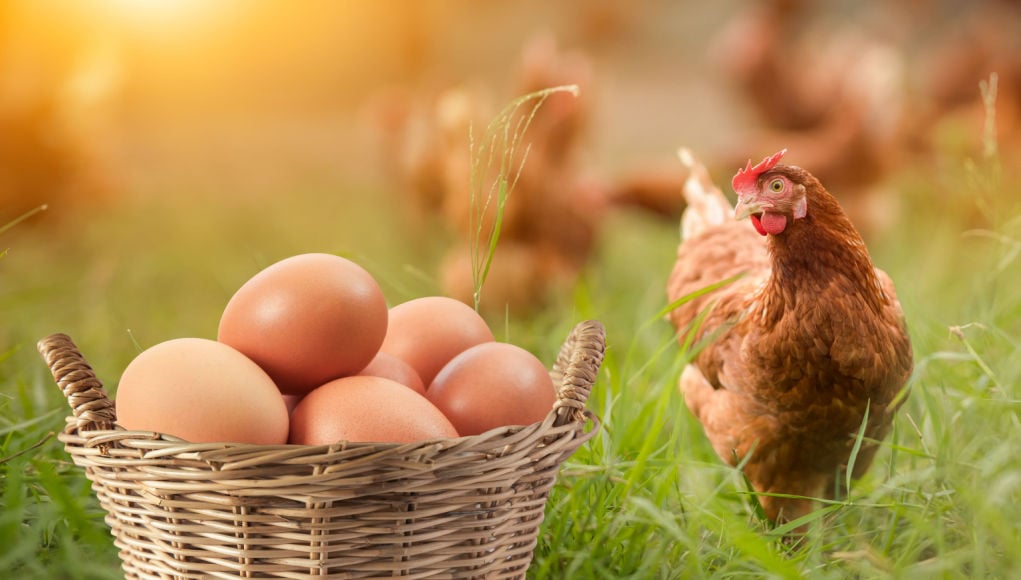














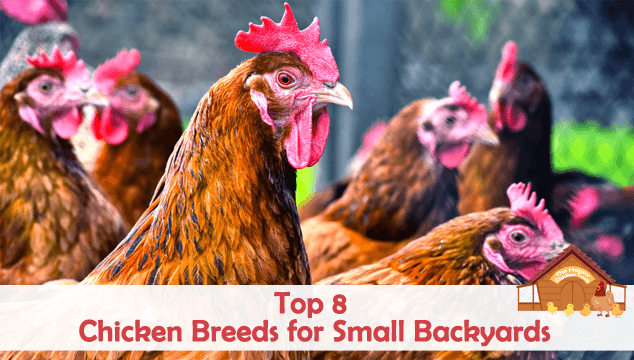
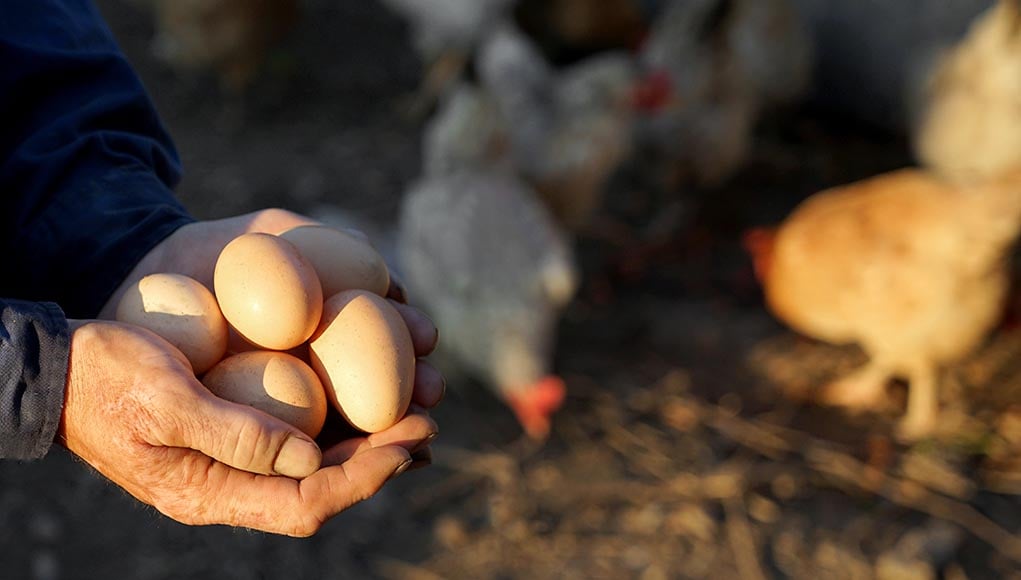
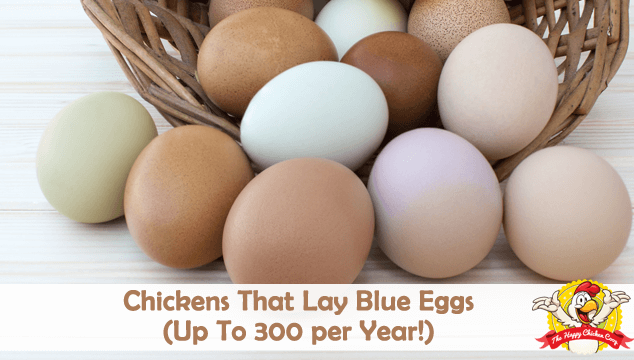
Very educational information.
I have ISA BROWNS and they are simply the best layers I have ever had. They are a small hen that lays every day with dark brown eggs that weigh over 30ozs. a dozen. They are not over 4 lbs. so they are very efficient on feed.
the brown egg is otherwise known as a country egg. This egg is rich in protein it strengthens our body and organic egg.mejor abogado de delitos sexuales